Quick summary:
- weak La Niña conditions during spring, neutral conditions thereafter
- positive Indian Ocean Dipole expected in the summer of 2018
- outlook for Japan: slightly warmer and drier than average in spring
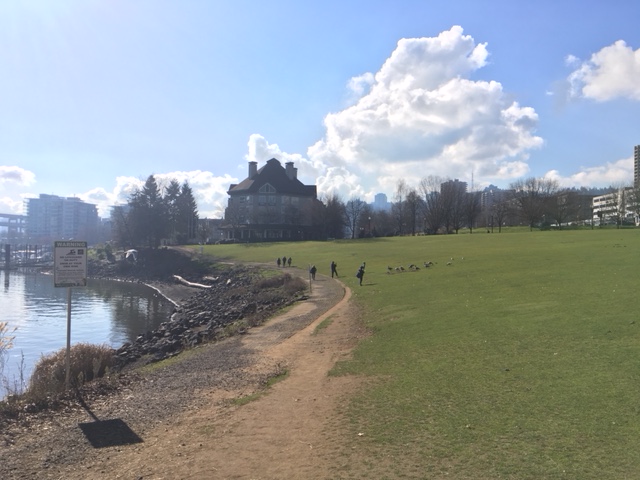
Every other year, the world’s biggest scientific meeting on ocean-related research, the Ocean Sciences Meeting, takes place in the US. This year, it was held on the West Coast in Portland, OR, and many of us attended. The picture above shows some scenery along the Willamette river. Latitude-wise, Portland sits a bit north of Hokkaido but daytime temperatures were around 5 °C and one could get a sense of spring. In Japan, on the other hand, wintery temperatures are continuing (with daytime highs in Hokkaido sometimes not exceeding -10 °C). This winter season was unusually cold, which may be related to the ongoing weak La Niña conditions in the tropical Pacific, as well as blocking highs over Siberia and the North Pacific. So what is the outlook for spring?
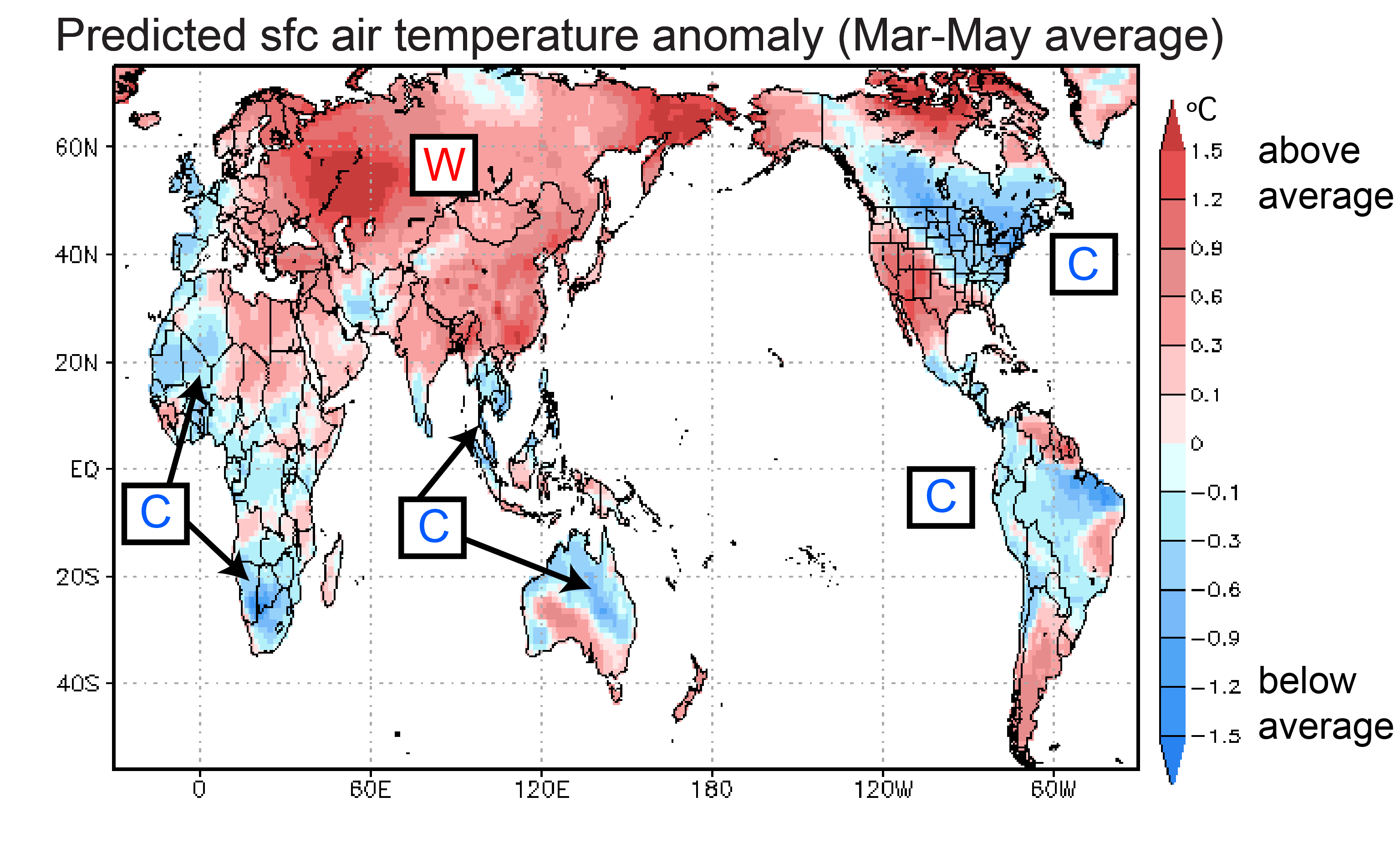
According to the SINTEX-F model, surface air temperatures over land will be above average over many parts of eastern Europe and Asia from March through May (Fig. 1). Cooler than average temperatures are predicted for the northeastern US and parts of Canada, as well as South America, northern Australia, and many parts of Africa.
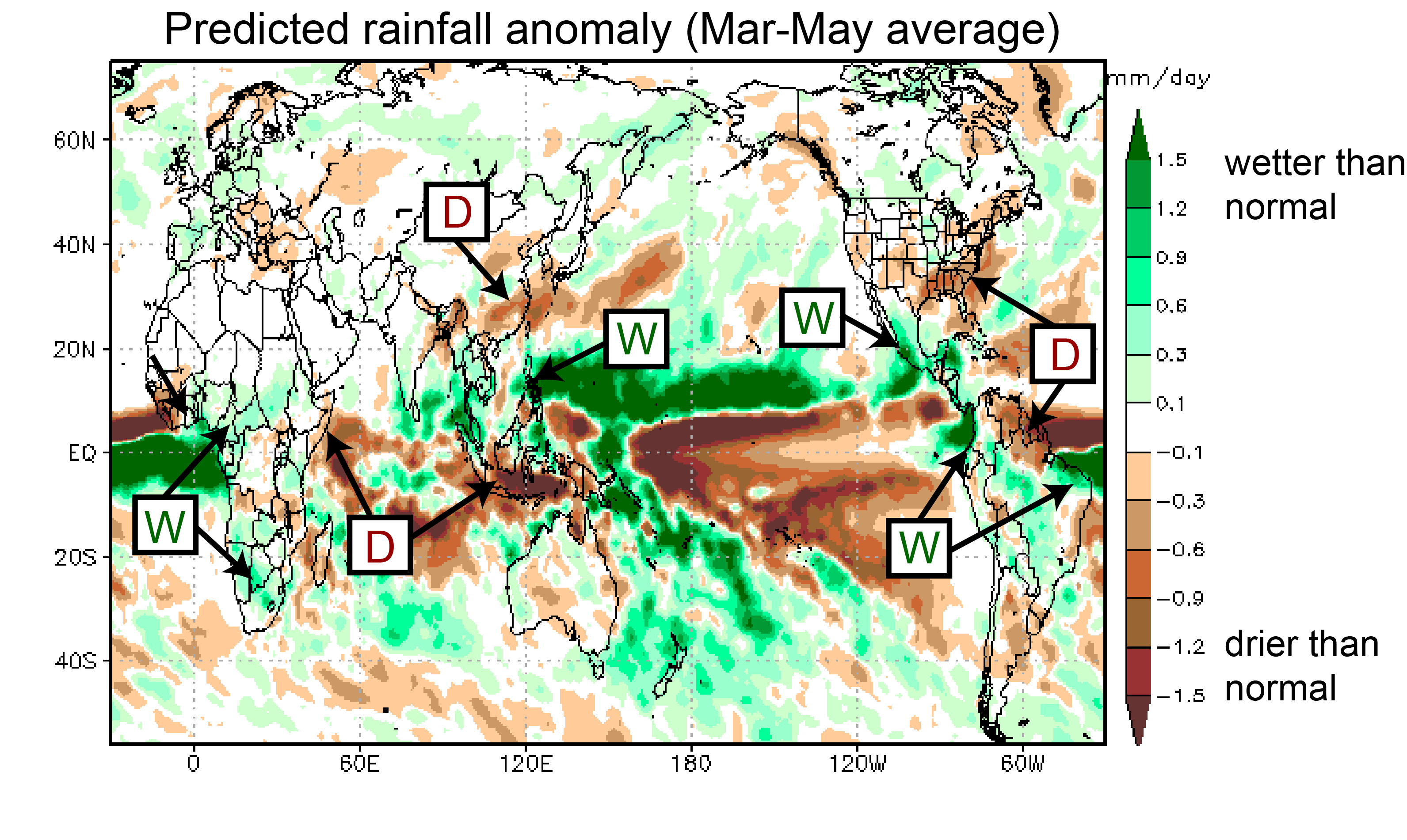
The rainfall prediction (Fig. 2) shows the clear signature of the continuing La Niña event in the tropical Pacific as sea-surface temperatures (SST) below average reduce convective activity and rainfall there. Overall the map shows a rather complex pattern with many areas of anomalously low and high rainfall. Most notable over land are the drier than average conditions in Indonesia, and the wetter than average conditions in the Philippines.
For Japan, the model indicates a warmer and drier than average spring. Please bear in mind though that the model’s forecast skill in the mid and high latitudes is rather limited (as demonstrated by our recent slightly less than accurate prediction for the Japanese winter).
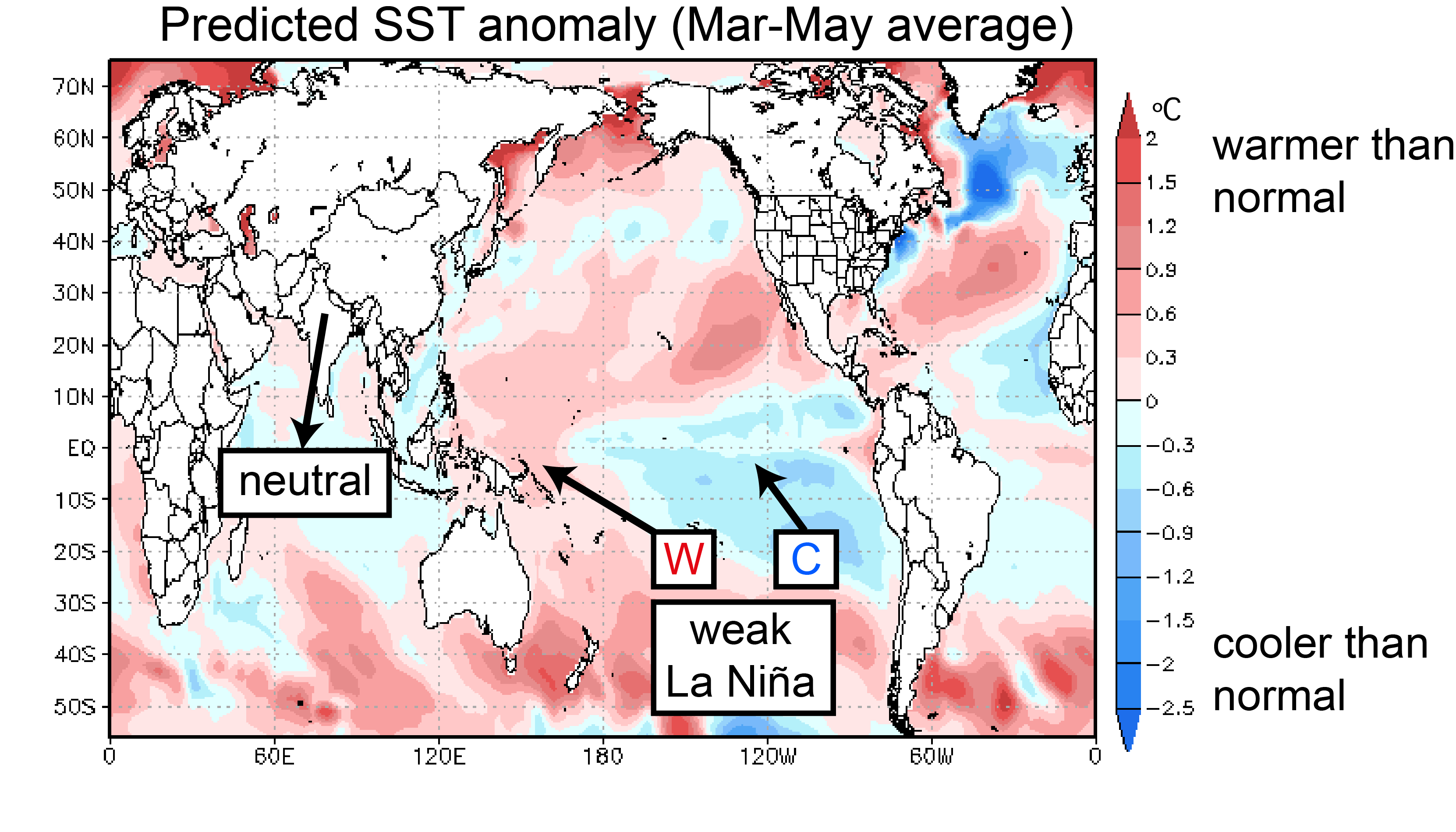
The SST prediction (Fig. 3) suggests colder than average temperatures in the central and eastern tropical Pacific and warmer than average temperatures in the west, suggesting that weak La Niña conditions will continue throughout spring. The tropical Indian Ocean, on the other hand, will continue to be in a neutral state.
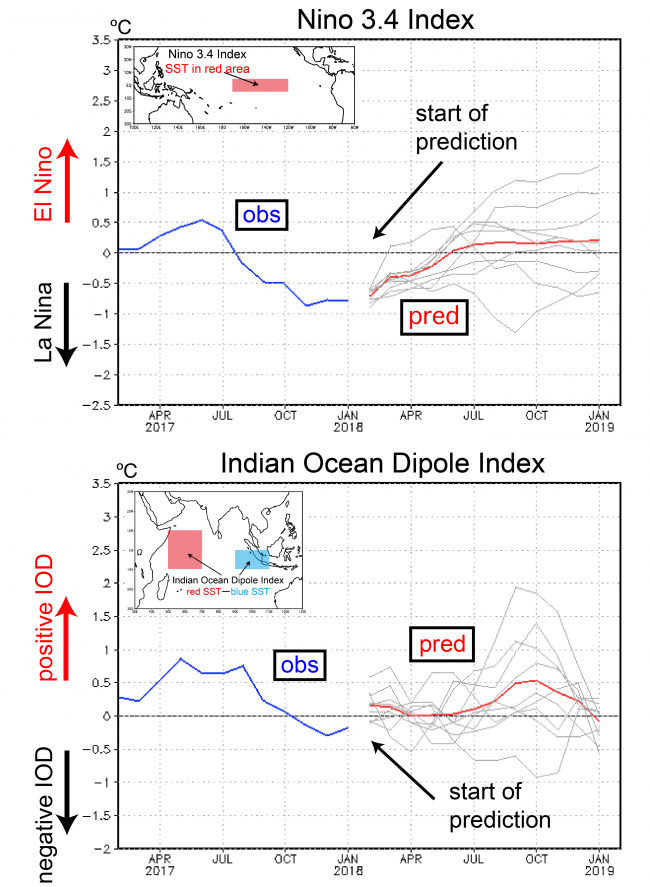
Figure 4 shows the extended forecast for two SST indices of interest. The Niño 3.4 index is predicted to stay below -0.5 °C until March of 2018, with weak La Niña conditions continuing until May (red line in the upper panel of Fig. 4). Neutral conditions are expected from summer. Weak La Niña conditions are also predicted by some other models from centers around the world (IRI ENSO Forecast).
The prediction for the Indian Ocean Dipole (IOD) index (Fig. 4, lower panel) suggests that neutral conditions will continue in spring, with a positive IOD event developing from summer. Note, however, that the spread of the ensemble members is quite large. This suggests a high degree of uncertainty.

